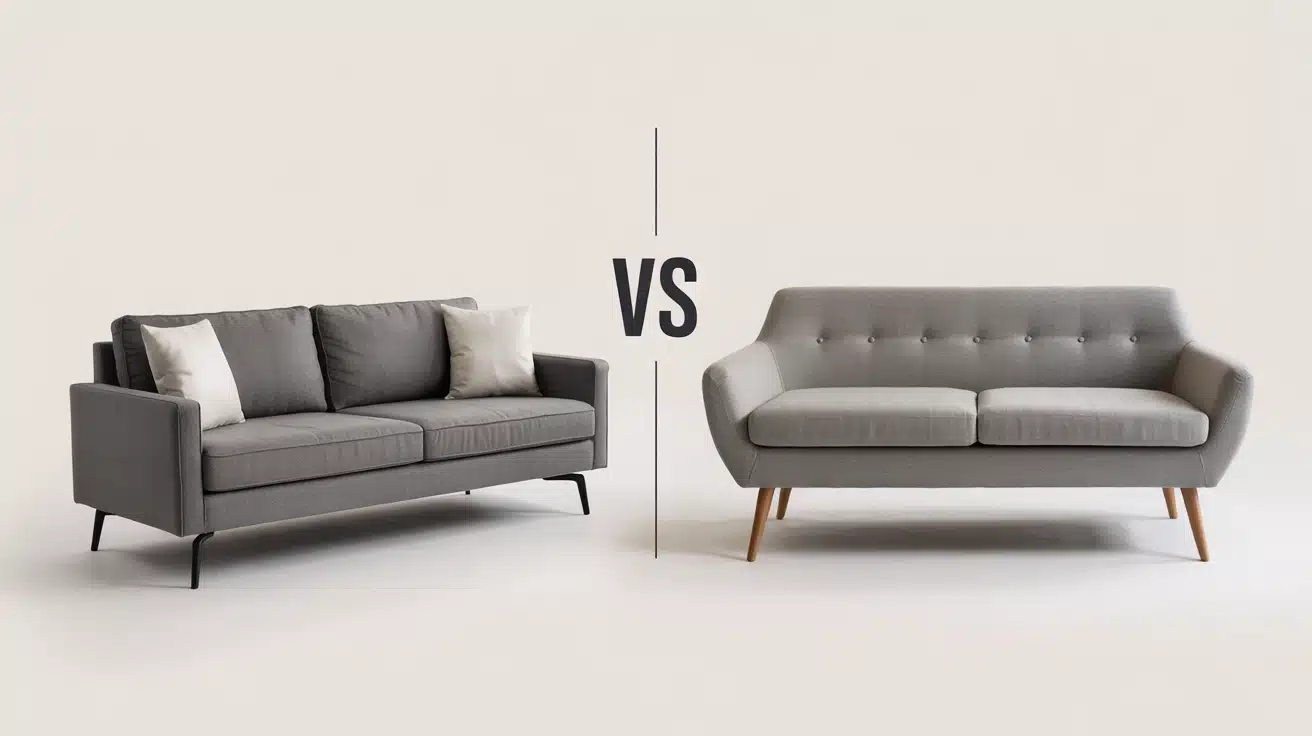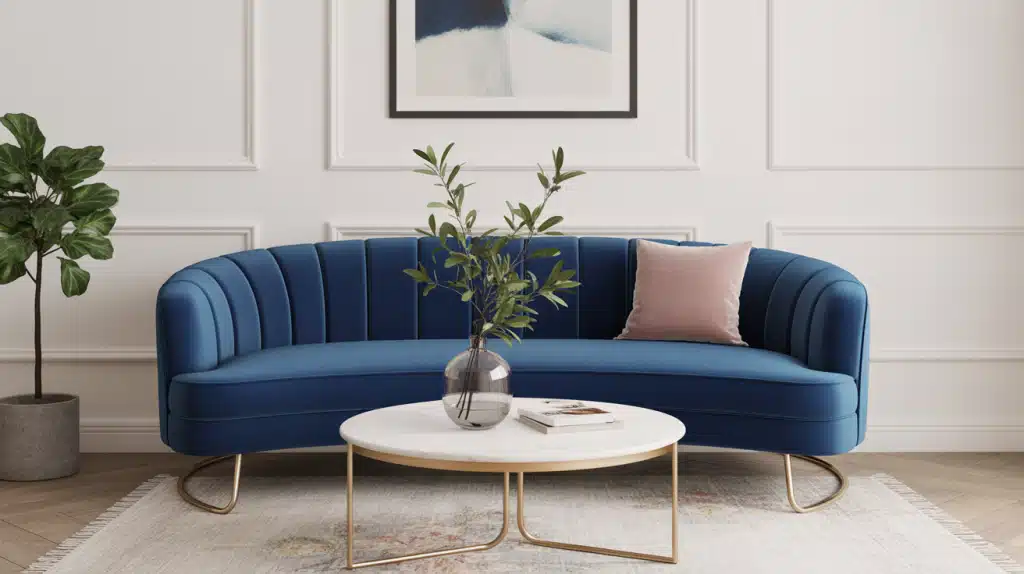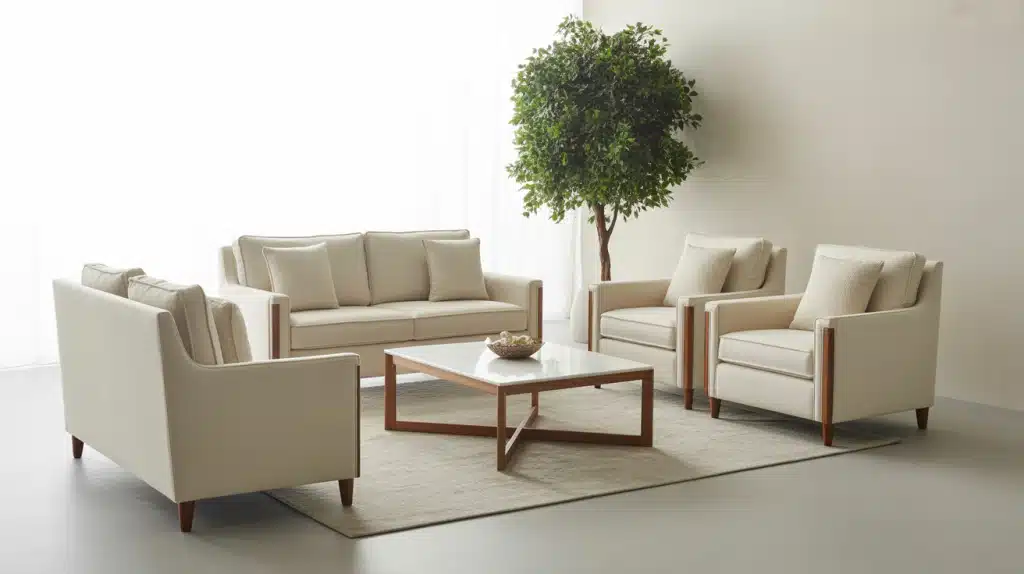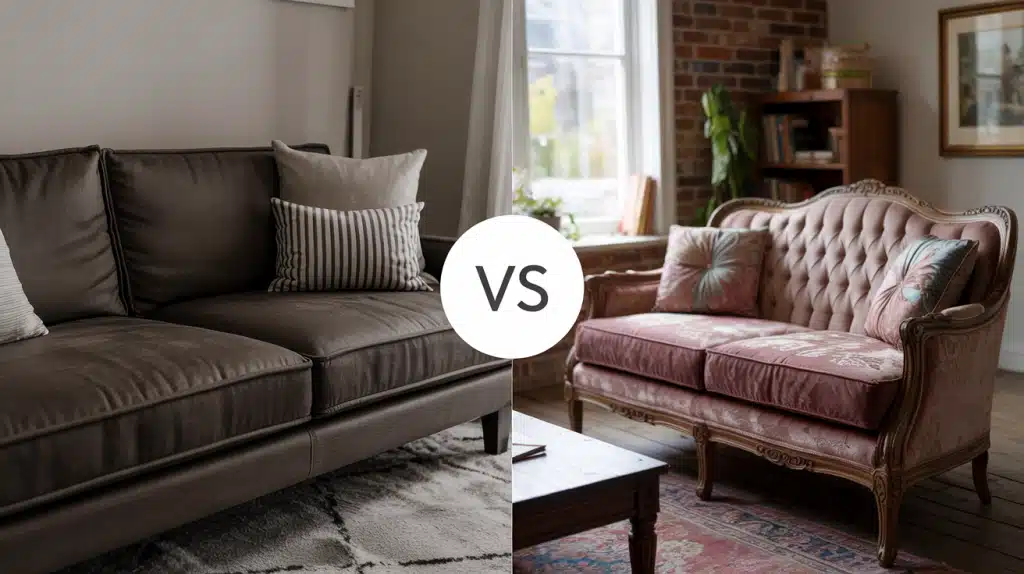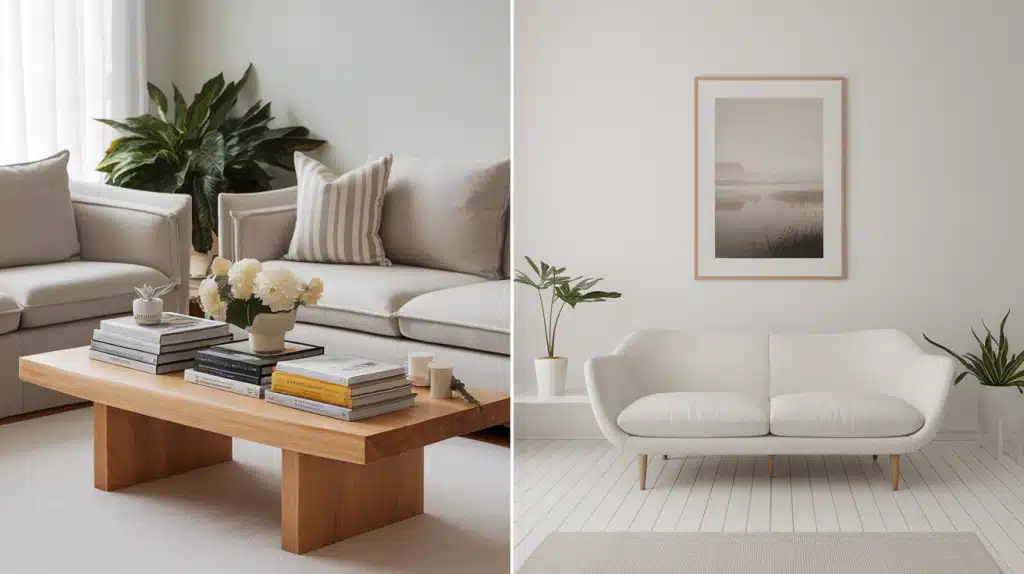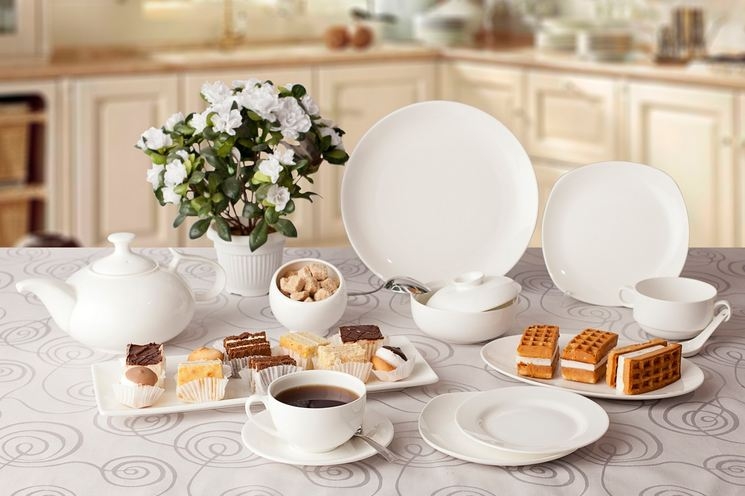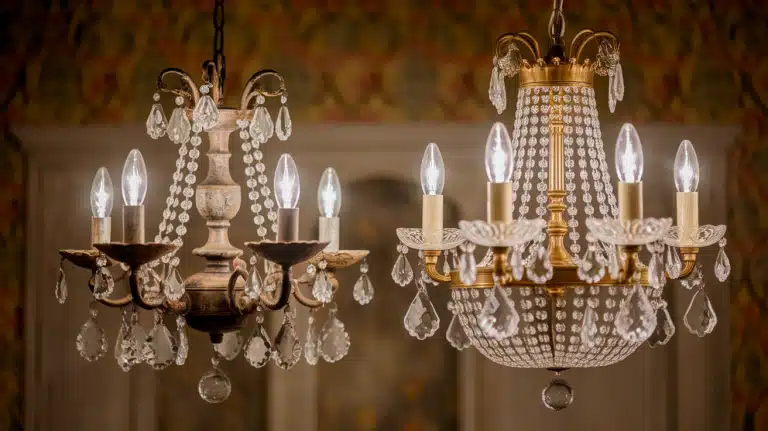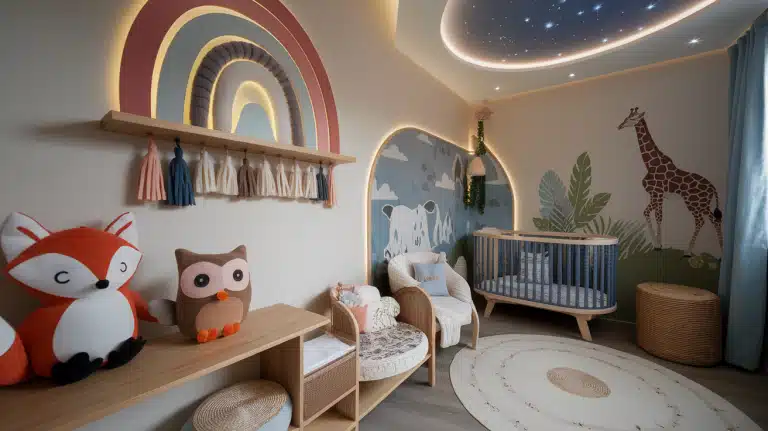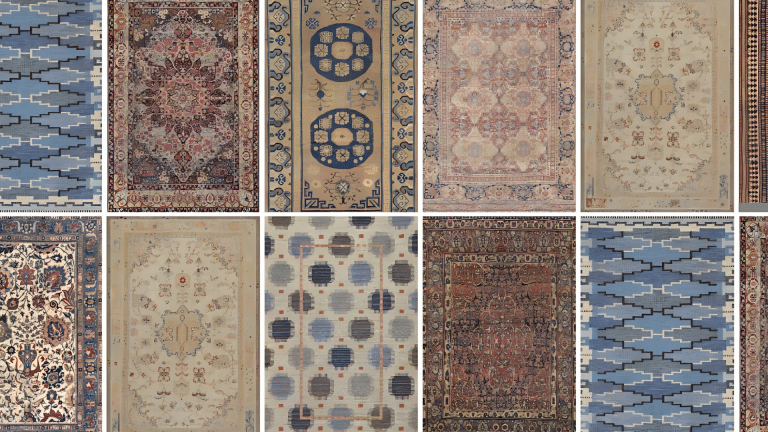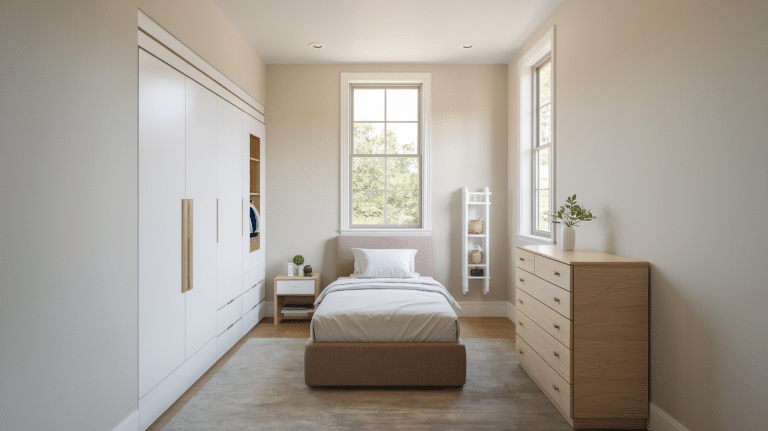What’s the Difference Between a Couch and a Sofa?
You’re shopping for furniture and see “sofa” on one website, “couch” on another. Are they the same thing? Most people use these words without thinking twice. But here’s the truth: they’re not identical.
While many stores treat them as the same product, couches and sofas have fundamental differences. Your choice affects your room’s style, comfort, and budget.
Understanding these differences helps you make smarter shopping decisions. You’ll know what to ask for and get exactly what fits your space. This knowledge saves you money and prevents buyer’s regret.
So what sets them apart? Let’s clear up this common confusion once and for all.
Are a Couch and a Sofa the Same?
No, couches and sofas are not the same thing. While they’re both seating furniture, they have clear differences in design and purpose.
Sofas are more formal with structured backs and arms, making them perfect for living rooms and entertaining guests. They usually have fitted upholstery and a neat appearance.
Couches are more casual and relaxed. They focus on comfort over formality. Many couches have softer cushions, lower backs, or no arms at all.
They’re designed for lounging, napping, and casual family time. You’ll find them in TV rooms, dens, and cozy spaces.
Understanding this difference helps you choose the right piece for your space and budget.
Couch vs. Sofa: Side-by-Side Comparison
A simple table comparing a couch and a sofa, so you can instantly see how they differ in style, size, purpose, and regional use.
| Feature | Couch | Sofa |
|---|---|---|
| Origin | French “coucher” (to lie down) | Arabic “ṣuffa” (raised platform) |
| Design Style | Casual, cozy, sometimes armless | Formal, structured, symmetrical |
| Typical Use | Informal spaces (TV room, lounge) | Formal rooms (living room, office) |
| Common in | North America | UK, high-end decor marketing |
The Story Behind the Words ‘Couch’ and ‘Sofa’
From French and Arabic roots to modern living rooms, the words ‘couch’ and ‘sofa’ have traveled centuries and cultures before landing in our everyday vocabulary.
Couch
The word “couch” comes from Old French coucher, which means “to lie down.”
English speakers started using it in the 14th and 15th centuries. From the very beginning, this word carried ideas of rest and relaxation.
People would “couch” themselves on furniture to sleep or recline. This informal, laid-back meaning stuck around for centuries. Even today, we talk about “couching” or lounging around.
The famous “psychiatrist’s couch” from Freud’s time shows how this furniture became linked with lying down and comfort.
Sofa
“Sofa” has more exotic roots. It comes from the Arabic word ṣuffa, meaning a raised platform with cushions.
English adopted this term much later, in the 17th century. Back then, sofas were formal pieces of furniture.
They were designed for sitting upright, not lying down. Wealthy families used them in parlors for entertaining guests.
The word kept its sense of structure and formality. This is why “sofa” still sounds more proper than “couch” today.
What Makes a Sofa Different from a Couch?
While often used interchangeably, a sofa typically refers to a more formal, structured piece of seating, whereas a couch leans toward casual comfort and relaxed lounging.
1. Design & Structure
Sofa: Sofas have a structured, upright design with high backs and prominent arms. They’re usually longer and larger than couches. The upholstery looks neat and fitted, giving them a clean, formal appearance.
Couch: Couches feature a more relaxed, casual design. Some don’t have arms at all, or they have lower, softer backs. They’re often overstuffed with extra padding to make them super comfortable for lounging.
2. Intended Purpose & Room Placement
Sofa: Sofas work best in formal living rooms, offices, and reception areas. They’re perfect for hosting guests and group conversations. You’ll see them in spaces where you want to impress visitors.
Couch: Couches belong in dens, TV rooms, and casual family spaces. They’re made for relaxing, napping, and hanging out. Think comfort over formality when you choose a couch.
3. Size & Comfort
Sofas: Sofas are typically larger with more seating capacity for multiple people. They provide structured support that keeps you sitting upright properly. The firm cushions maintain their shape even with regular use.
Couches: Couches may be smaller and more compact than sofas. They focus on plush, soft comfort that lets you sink in. The cushions are often thicker and softer, making them perfect for curling up and relaxing.
How to Choose: Sofa or Couch for Your Home?
- Room Size: Choose a sofa for larger rooms where you want to fill space, and pick a couch for smaller, cozy areas.
- Formality of Space Go with a sofa for formal living rooms and reception areas, but choose a couch for casual family spaces.
- Comfort vs Aesthetic: Pick a sofa if you want a structured style that looks impressive, or choose a couch if comfort comes first.
- Number of Occupants: Sofas are ideal for hosting groups and entertaining guests, whereas couches are perfect for 1-2 people relaxing.
- Budget & Brand Perception Sofas often cost more and sound fancier in stores, but couches can offer the same quality at better prices.
How Different Countries Use “Couch” and “Sofa”
Language and culture shape the way we talk about furniture, while some nations prefer ‘sofa,’ others swear by ‘couch,’ and a few use entirely different words.
1. United States
Couch for Casual, Sofa for Sale. “Couch” dominates everyday conversation across most American households. However, furniture stores and high-end brands prefer “sofa” in their marketing materials.
Younger people say “couch” more often, while interior designers and professionals lean toward “sofa.” This creates a split between casual and formal usage.
2. United Kingdom
Sofa is Standard British “Sofa is the standard British term used in both casual talks and formal settings. Most Brits find “couch” sounds American or outdated.
Older generations and rural areas still use “settee” as their preferred word. The influence of American TV shows has made the “couch” more recognizable but not widely adopted.
3. Canada
Both Terms Work Fine. Both “couch” and “sofa” work well in Canadian English without much confusion. “Couch” tends to win in informal speech, especially in western provinces like Alberta and BC.
“Sofa” appears more in catalogs and design magazines. The usage often depends on regional preferences and family backgrounds.
4. Australia
Couch and Lounge Rule “Couch” is the clear winner in Australian homes and casual conversation. “Sofa” only shows up in furniture stores and interior design contexts.
Many Australians also say “lounge” to describe their main seating furniture. This makes Australia unique, with three common terms for the same piece.
5. India
Sofa Sets are Popular. “Sofa” is the most popular term in Indian cities and furniture shopping. Most people say “sofa set” when talking about multiple matching pieces.
“Couch” appears mainly in lifestyle magazines and imported American content. Urban Indians use “sofa” almost exclusively in their daily vocabulary.
6. South Africa
Couch for Chat, Lounge Suite for Sets. “Couch” wins in informal South African speech, but both terms are widely understood. Many families prefer saying “lounge suite” for coordinated furniture sets.
The choice often depends on social context and whether you’re shopping or just chatting at home.
Styling Tips for Sofas and Couches
For Sofas
- Symmetrical Arrangements: Place matching side tables and lamps on both sides to create a balanced, formal look.
- Neutral Tones for Formality: Choose beige, gray, or cream colors that look professional and timeless in any room.
- Pair with Matching Accent Chair: Add coordinating chairs in the same style to complete your formal seating area.
For Couches
- Cozy Throws and Cushions: Layer soft blankets and mix-and-match pillows to create a warm, inviting feel.
- Asymmetrical, Relaxed Layouts: Place furniture at different angles and avoid perfect symmetry for a casual vibe.
- Bold Colors for Personality: Try bright blues, deep reds, or fun patterns to show your personal style and make the space lively.
Final Thoughts
The difference between a couch and a sofa comes down to style, purpose, and formality. Sofas offer a structured design for formal spaces and hosting guests.
Couches provide relaxed comfort for casual family time and small spaces.
Your choice depends on your lifestyle, not strict rules. Consider your room size, how you’ll use it, and what feels right for your home. Both can be high-quality furniture that lasts for years.
Ready to shop? Use this knowledge to pick the perfect piece for your space. What do you call your living room seating? Share your preference in the comments below!
Love decorating? Find more home decor inspiration you’ll adore.
Frequently Asked Questions
Why Do Americans Call a Sofa a Couch?
Americans prefer “couch” because it sounds more casual and relaxed, matching their informal communication style in everyday life.
Should you Say Couch or Sofa?
Use “couch” for casual conversations and “sofa” when shopping or talking to interior designers for the most appropriate tone.
Who Says Sofa and Who Says Couch?
Furniture stores, designers, and formal contexts use “sofa,” while families, friends, and casual settings prefer “couch” in most conversations.
Do Americans Use a Couch or a Sofa?
Americans say “couch” in daily speech but see “sofa” in stores and marketing materials, creating a divide between home and retail language.
Is It a Sofa or a Couch in the US?
“Couch” dominates American households while “sofa” appears in furniture catalogs and professional design discussions across the country.

